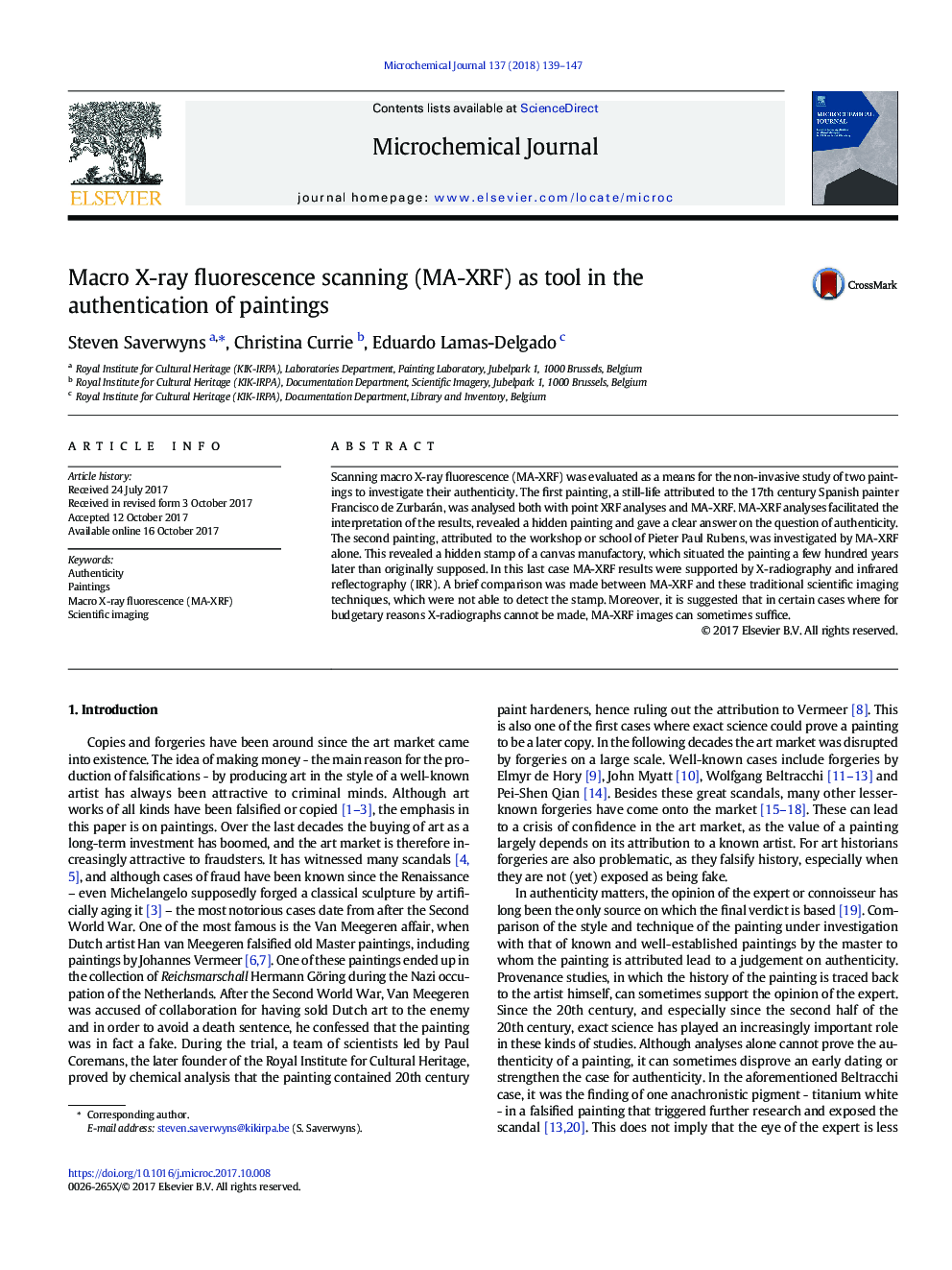| Article ID | Journal | Published Year | Pages | File Type |
|---|---|---|---|---|
| 7640954 | Microchemical Journal | 2018 | 9 Pages |
Abstract
Scanning macro X-ray fluorescence (MA-XRF) was evaluated as a means for the non-invasive study of two paintings to investigate their authenticity. The first painting, a still-life attributed to the 17th century Spanish painter Francisco de Zurbarán, was analysed both with point XRF analyses and MA-XRF. MA-XRF analyses facilitated the interpretation of the results, revealed a hidden painting and gave a clear answer on the question of authenticity. The second painting, attributed to the workshop or school of Pieter Paul Rubens, was investigated by MA-XRF alone. This revealed a hidden stamp of a canvas manufactory, which situated the painting a few hundred years later than originally supposed. In this last case MA-XRF results were supported by X-radiography and infrared reflectography (IRR). A brief comparison was made between MA-XRF and these traditional scientific imaging techniques, which were not able to detect the stamp. Moreover, it is suggested that in certain cases where for budgetary reasons X-radiographs cannot be made, MA-XRF images can sometimes suffice.
Keywords
Related Topics
Physical Sciences and Engineering
Chemistry
Analytical Chemistry
Authors
Steven Saverwyns, Christina Currie, Eduardo Lamas-Delgado,
